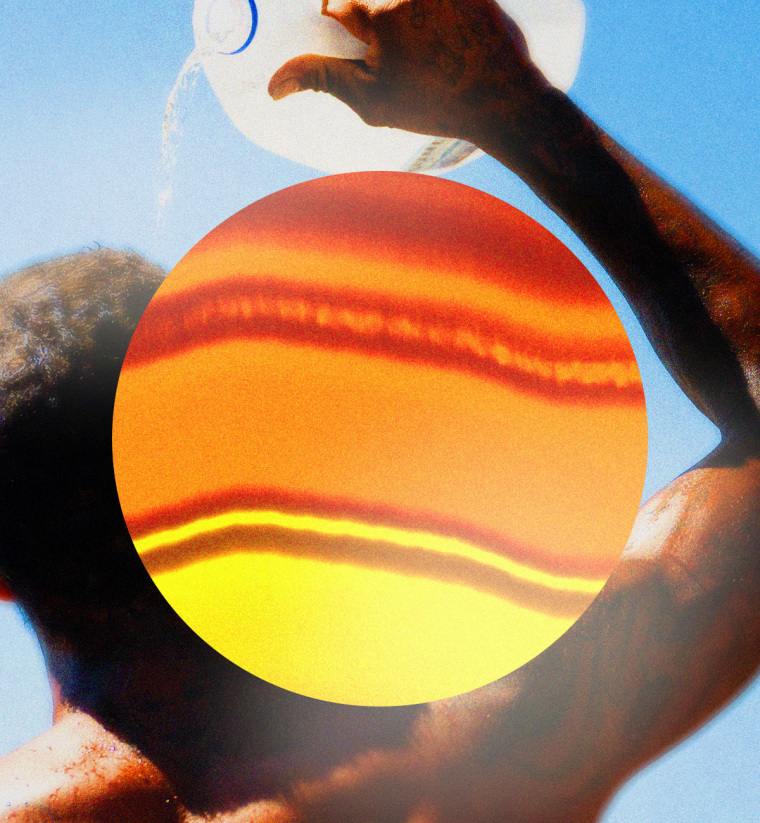There are hot summers. And then there’s the summer of 2023.
For huge portions of the United States, the past few months have been brutally hot — often for weeks on end. Heat records were set across the country, and much of the southern tier spent this summer in the grips of a particularly unrelenting stretch of heat and humidity.
Seven states in the South and the West, including Louisiana, Mississippi, Texas, Florida, New Mexico, Arizona and Washington, had one of their hottest summers in more than 70 years, according to an NBC News analysis of data from the National Oceanic and Atmospheric Administration and the National Centers for Environmental Information. Of those states, Louisiana had its hottest summer in seven decades.
Heat waves are expected to become more frequent and more intense as the planet warms. Studies have also shown that extreme heat events are lasting longer as a result of climate change.
The planet notched its hottest summer on record “by a large margin,” according to data released last week by the European Union’s Copernicus Climate Change Service. In June, July and August — the months that make up “meteorological summer” — Earth’s average surface air temperature was about 1.2 degrees Fahrenheit warmer than the long-term average.
In the U.S., a slew of heat records have been toppled this summer. Phoenix set a record with 31 straight days at or above 110 F, obliterating the previous record of 18 days. More than 50 counties in Texas, mostly in the southern portion of the state, experienced their hottest summer in more than a century of record-keeping.
But what was it really like to live in such oppressively hot conditions? NBC News talked to people in Arizona and Texas, two of the states that were hit the hardest by extreme heat this summer, about how soaring temperatures affected their day-to-day lives. Here’s what they said.
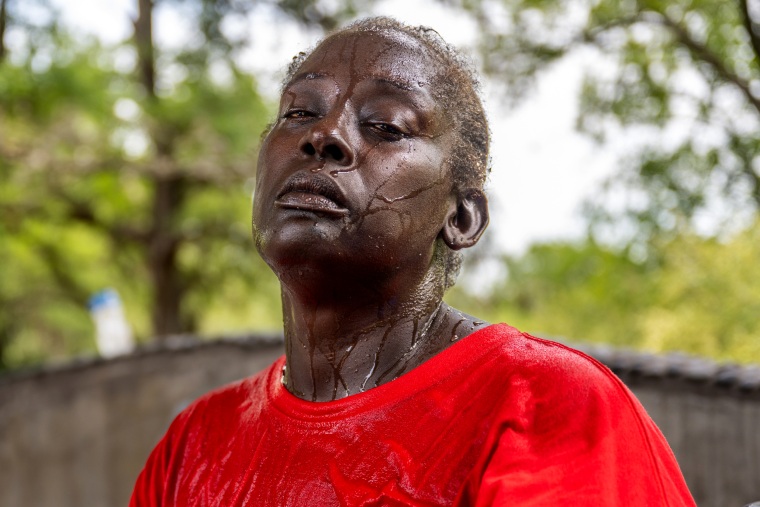
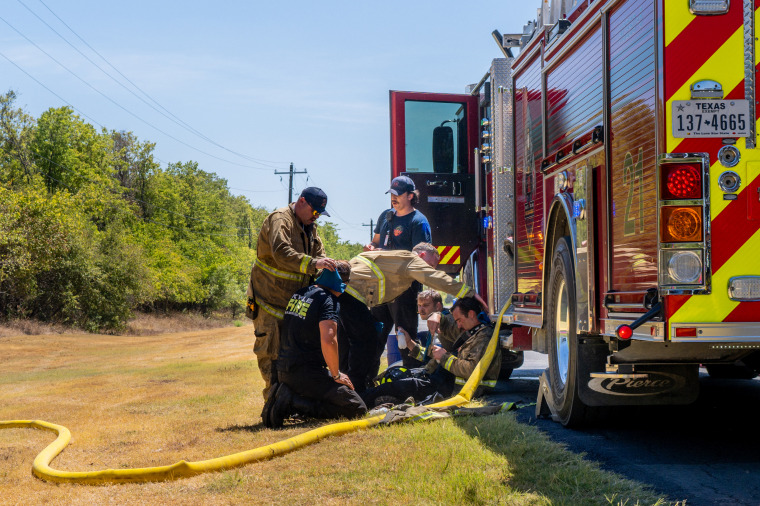
David Broyles, union electrician with the International Brotherhood of Electrical Workers Local 520 in Austin, Texas
“I’ve lived in Texas my whole life. I’m 37 now and have been doing electrical work since I was 19. And a majority of it is outside and it does feel like this summer and a little bit of last summer have been extra hot. The heat is incredibly oppressive.
“I’m the foreman, so I get to take care of my guys. I have pop-up canopies that provide shade. I’m going through like 60 pounds of ice in a day, just to keep water iced down at all times near the men. And we’re taking breaks as we need to.
“When it’s bad, I noticed that I’ll stop sweating. And then you’ll start to feel kind of dizzy or lightheaded or you’ll get confused. I’ve seen people I work with when this starts to set in. They’ll be confused or they’ll just be kind of staring, and you can tell that it’s definitely heat stress setting in and we have to immediately have that person stop, get in shade, get some water.
“Another thing that people don’t realize is that as construction workers, we don’t have running water. We don’t have a place to wash our hands. We don’t have an actual bathroom. The portable restrooms that we have access to — they are 15 to 20 degrees hotter than it is outside. And then obviously there are no facilities. There’s no place to wash up. That’s something that is kind of forgotten a lot of times.”
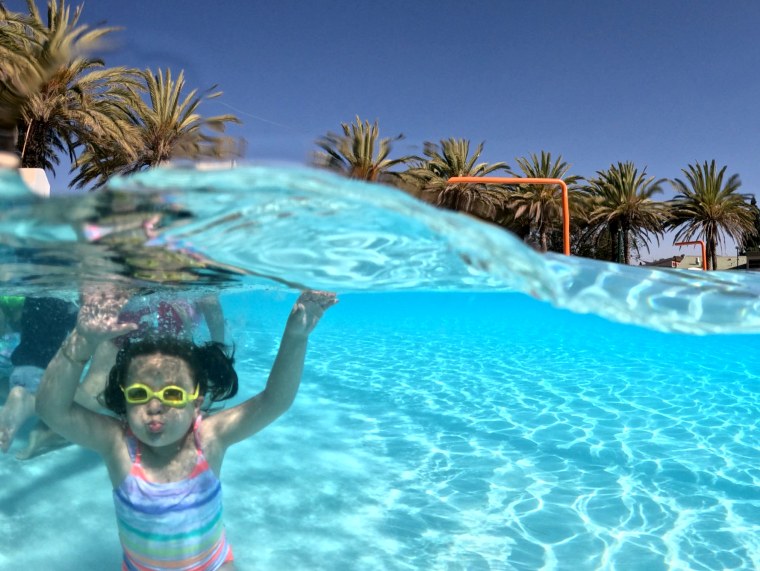
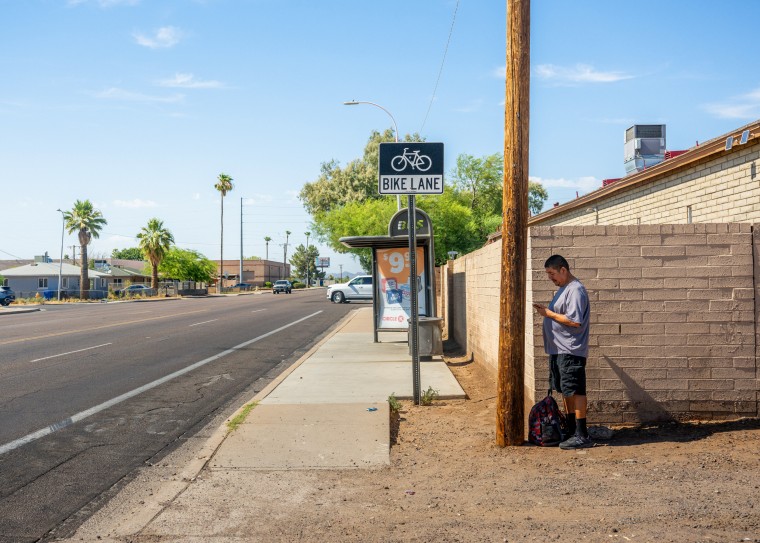
Homer Hernandez, letter carrier for the U.S. Postal Service in San Antonio, Texas
“In San Antonio, it’s been over 103 degrees, 105 degrees, 107 degrees And in our aluminum trucks, it’s about 136 degrees in here, and all we have is a little 6-inch fan that blows hot air.
“In Dallas, Texas, we had one carrier that passed away while he was delivering mail, due to the heat. Here in San Antonio, we had one in the hospital. He was dehydrated and he ended up in the hospital.
“I try to make a lot more cooling stops, throw water over my head to cool myself down, drink a bit more water that I have to provide myself and just keep going. It’s hot. And it’s unsafe. But that’s a part of our jobs.”
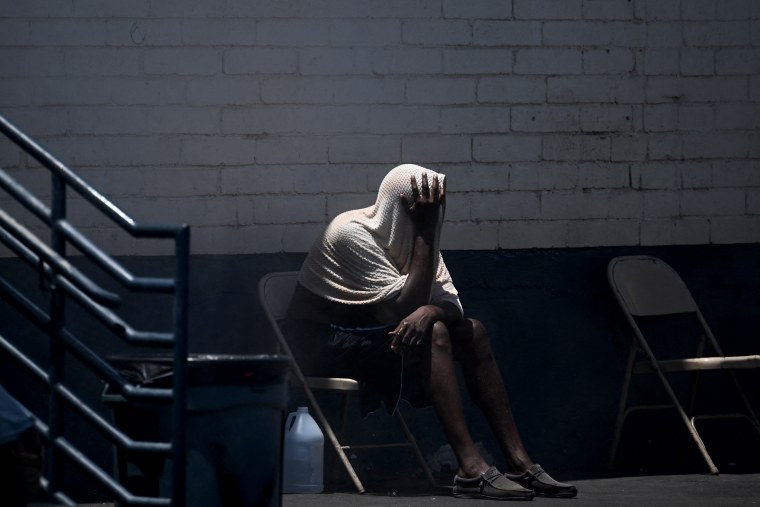
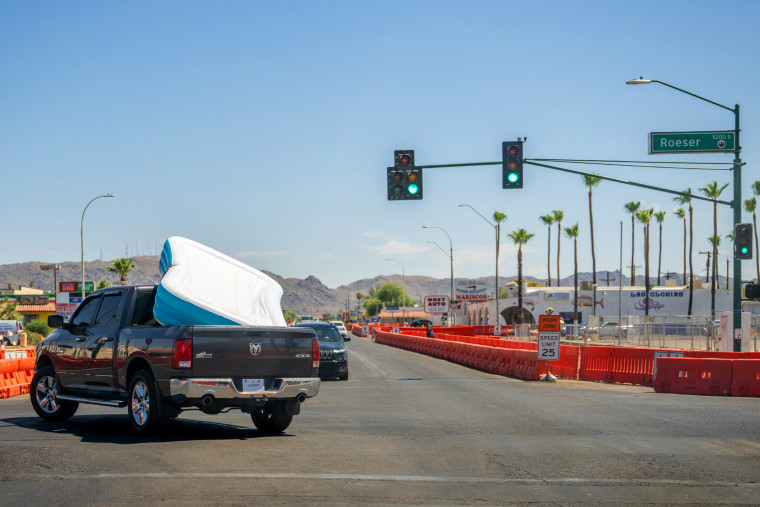
Stephanie Philpot, officer with the Salvation Army in Chandler, Arizona
“I’m actually an Arizona native, but I recently moved back here, and to be quite honest, I never remember it ever being like this before. Growing up in Arizona, the heat never really bothered me, but my first week back, it actually kicked my butt a little bit.
“Normally if you look at the forecast, you kind of have an idea of when the numbers will start to go down and you’re like, ‘OK, it’s not going to be as bad in a couple of days.’ But to see the numbers so high like that for weeks on end, it’s almost like there’s no hope.
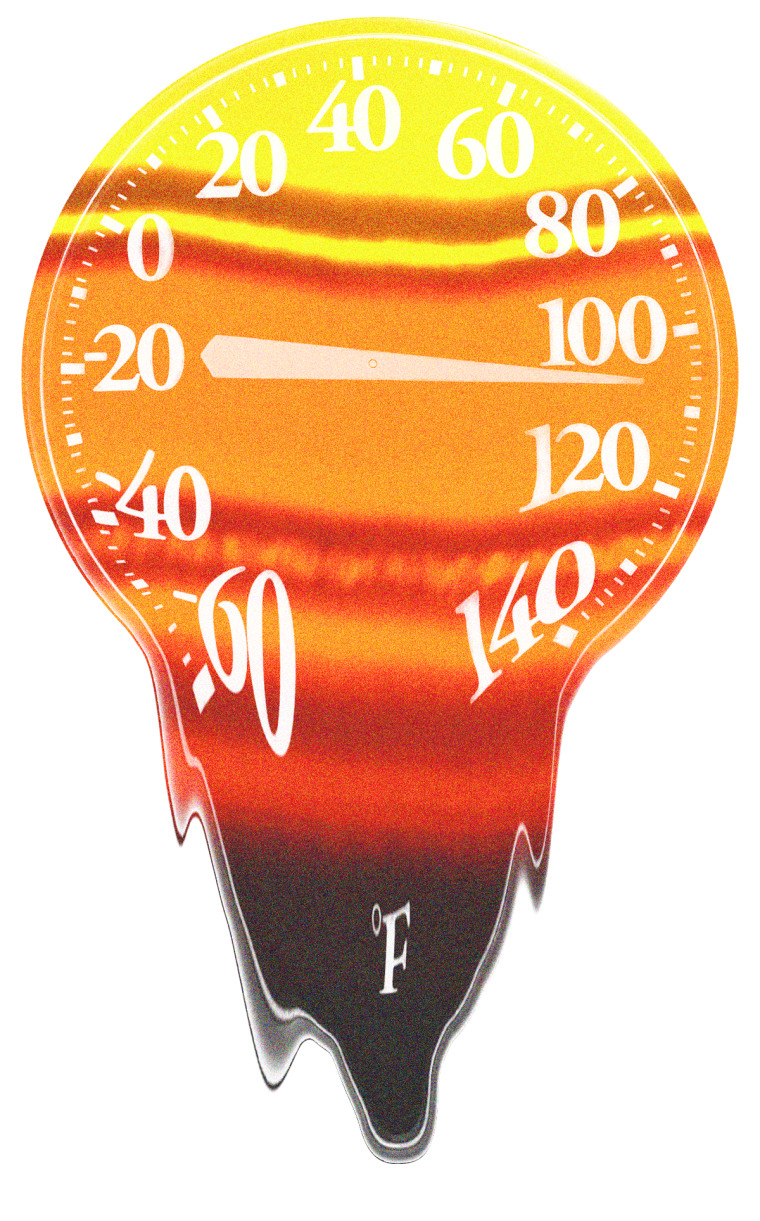
“Little things that you do on a daily basis now seem like they’re more taxing because of the heat. A perfect example is getting into your car. The other day, I moved my sun visor in my car out of the way and it kind of burned my hands. It burned my fingers and the feeling lingered for a while. That’s never happened to me before.
“In the past, our respite and heat relief center was not open on weekends, but because of the excessive heat we’ve actually been staying open Saturday and Sunday, as well. With it being so hot outside, one of our challenges was that even if we were to turn on the cold water, it was still pretty warm. We have a shower trailer and a lot of people expressed that even when they turn on the cold water, it’s still pretty warm. That’s from the heat outside. That’s how hot it has been.”
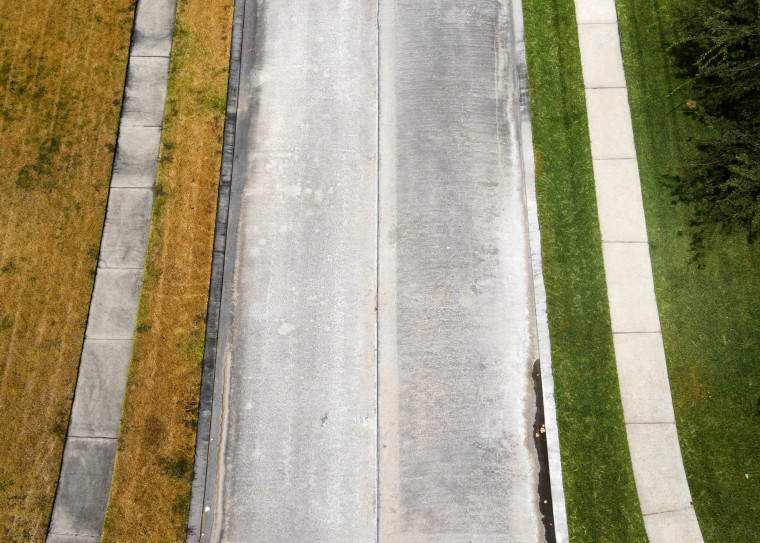
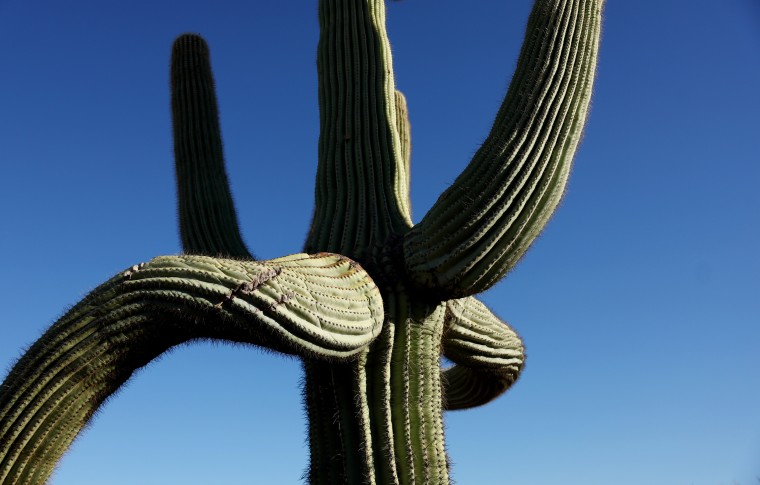
David Ramirez, firefighter in Phoenix and trustee at United Phoenix Firefighters Local 493
“Sometimes at 7 a.m. or 8 a.m., it was already 100 degrees, so we would have to wake up at 5 o’clock or 4:30 am to walk our dogs to make sure they got the exercise they needed.
“I think everybody, for the most part, is trying to stay indoors as much as possible. A lot of people here do have swimming pools, but even the swimming pools are like Jacuzzis.
“We’re all used to summer heat, but we used to get relief from the heat at night. We didn’t really have that this summer. To not have some kind of relief was a game changer.

“We often get 911 calls about a person down or for a welfare check. Maybe it’s someone driving past and they see somebody lying on the street. Well, if that happens in 118 degrees, and if no one helps that person until we get there, they’re going to have second-degree burns. When it’s 118 degrees, that pavement could be 160 degrees. And we’ve seen that.
“When it’s super hot already, like 118 degrees, you put your gear on and, within five minutes, you’re completely drenched.
“Every day, we’re handing out waters and we have rags that we keep in the ice chests on the firetruck. We’re just trying to cool people down and trying to let them know that there are cooling spots that the city has opened. It’s affecting everybody but it’s very unfortunate for the homeless and people out on the streets during this heat.”
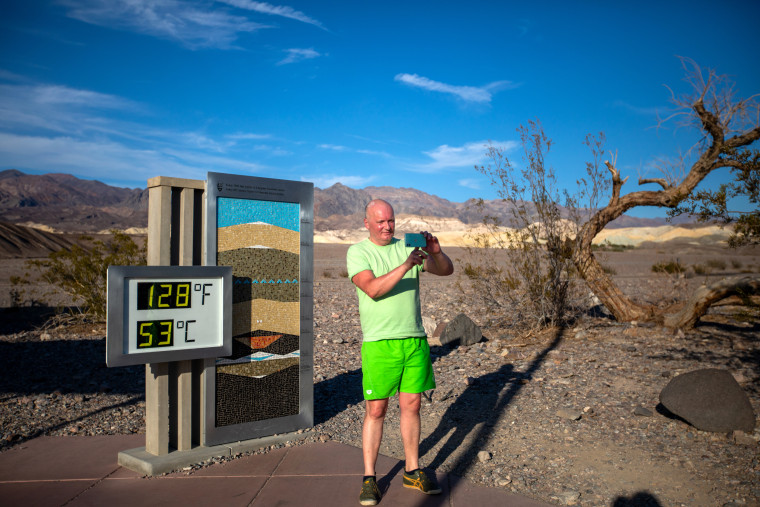
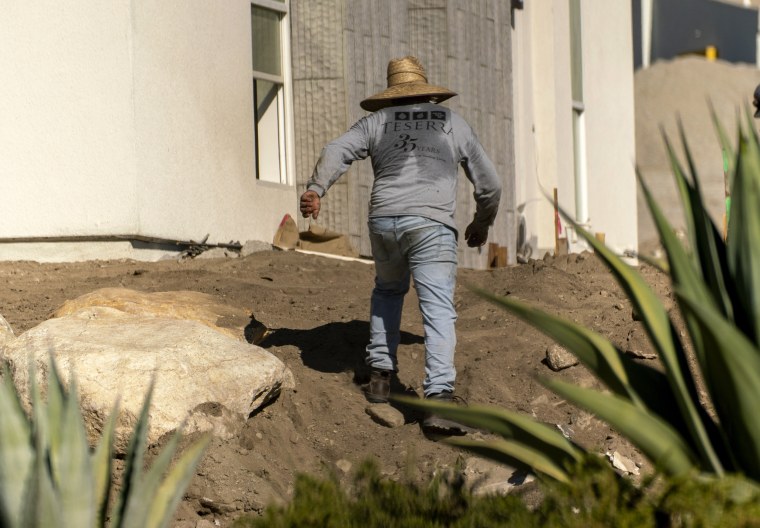
Ryan Pollock, political director for the International Brotherhood of Electrical Workers Local 520 in Austin and state lobbyist for the Texas State Association of Electrical Workers Int Brotherhood
“I’ve grown up in and out of Texas my whole life, but I’ve been in Austin for just over 16 years now. This was definitely the worst that I’ve experienced. Summer 2011 was really bad as well, but I think this surpassed it.
“I haven’t been able to stay active like I was before, which is really the first time that’s ever happened. Sometimes I’ll cut back a little bit on working outside or just being active, but this is the first time where I haven’t been able to handle it. I really enjoy going out for walks, just for my personal, physical and mental well-being and all that, and I haven’t been able to do that for the last few months and it’s really been a bit of a struggle. Very much a bummer. It’s like the inverse of seasonal affective disorder.
“I’ve heard people talking about leaving. They may not be able to do it right away but they’re looking. Yeah, people are looking for an exit because they’re just done with this.”
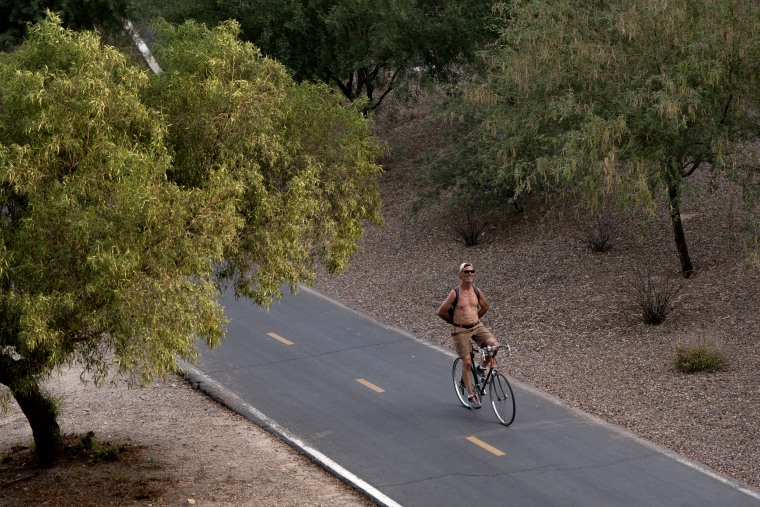
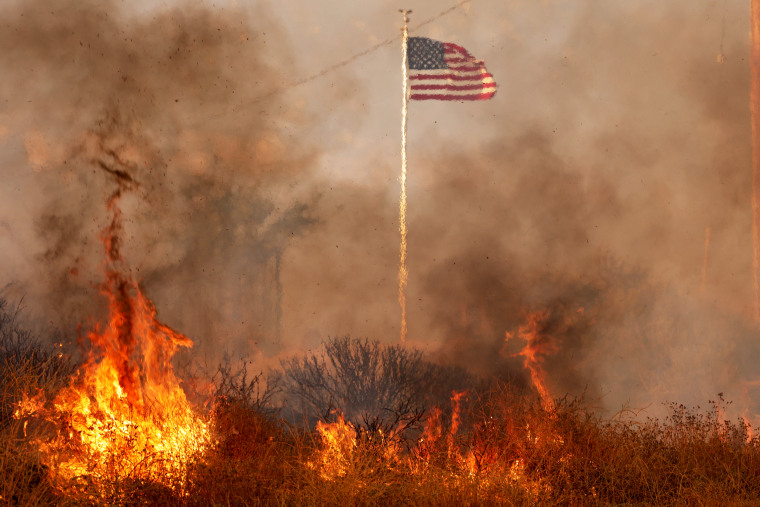
Ariana Aiello, resident of Scottsdale, Arizona
“This has been one of the most brutal summers we’ve had, and I’ve lived in Arizona for over 30 years. You find yourself looking forward to going to your day job and being in air conditioning, but it’s really rough. Kids can’t play outside. We walk our dogs at 5 in the morning. If you want to do any sort of exercise, you have to do it way early.
“You feel like you’re in an oven. And I think the hardest part is that there hasn’t really been a break.
“I’m a big outside person. I love hiking and all that. You just get tired of being trapped inside. It was like during Covid.
“It was over 110 degrees for basically 31 days. That’s not normal. Over 110 degrees is really a tough place to be.”
